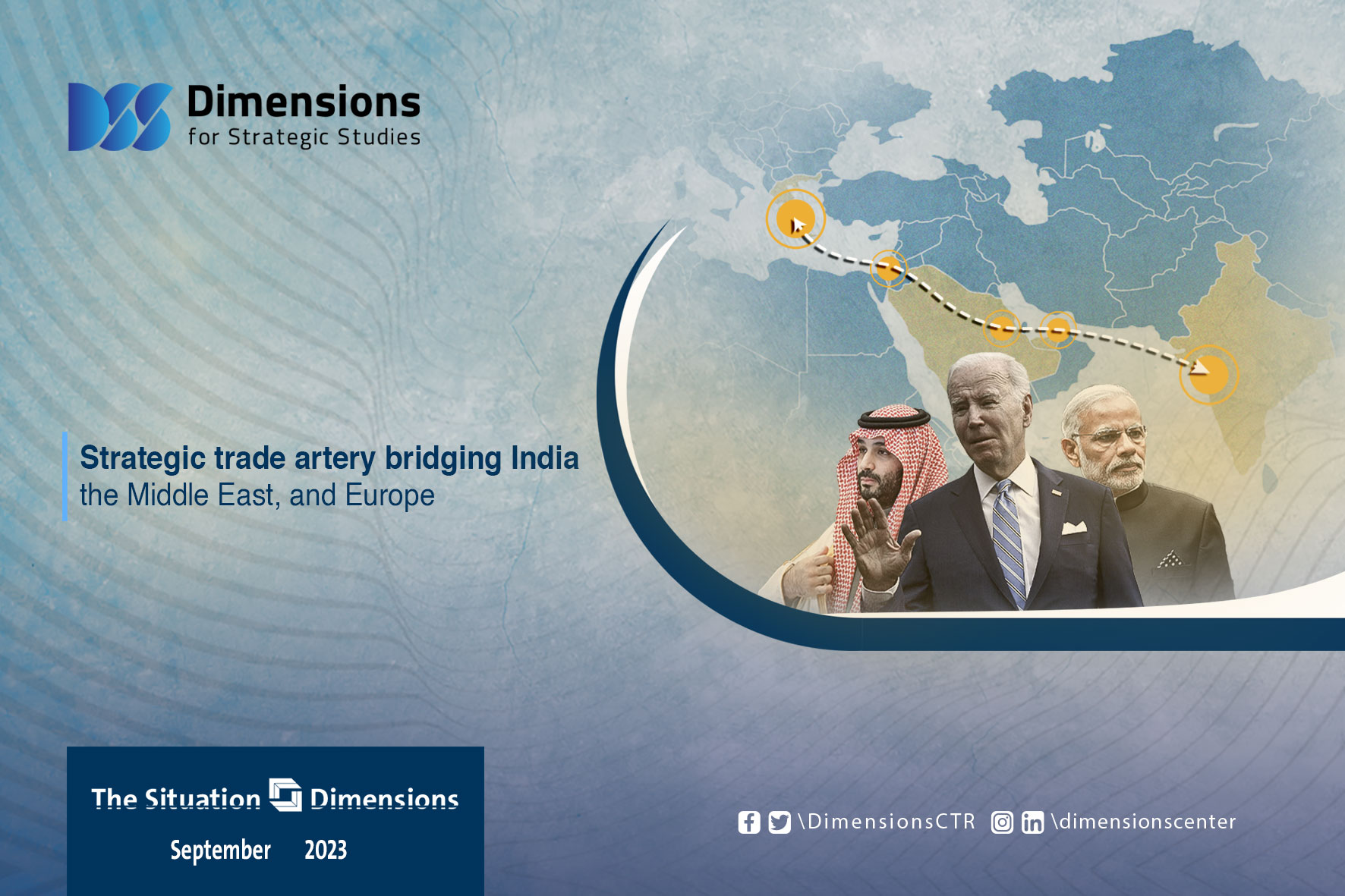
Strategic trade artery bridging India, the Middle East, and Europe
2023-09-191801 view
In the G20 summit held in September 2023, the leaders of the United States, Saudi Arabia, and India agreed on establishing an economic corridor that will link India, Middle East and Europe. The agreement stipulates that the details of the project's implementation will be announced within sixty days of signing the memorandum of understanding.
This initiative came amidst economic tensions with China, the driving force behind the Belt and Road Initiative that connects China with Europe via the Middle East, whose leader was absent from the summit, in addition to the war between Russia and Ukraine, backed by the United States and the European Union.
Therefore, the memorandum of understanding can be highlighted through the following points:
· Timing: The discussion of the memorandum of understanding comes amidst a major economic crisis sweeping the world, following which growth rates have declined, inflation intensities have increased, and global trade has weakened. The initiative will benefit in restoring hope to revitalize various sectors including infrastructure, transportation, exports, and banks, thereby stimulating the global economy.
· Geopolitics: The route extends from India, one of the largest economies and the most populous power in the world, which possesses immense agricultural and industrial opportunities thanks to low wages and high growth potentials. The corridor then extends towards the Gulf countries; the primary source of energy in the world, passing through Israel, which is struggling for economic integration with its surroundings, and then to Europe; the most prominent market and economic hub in the world. This accelerates trade processes and increases their volume.
· Competitiveness: The talk about the economic corridor comes several years after China proposed the Belt and Road Initiative that connects China with Europe. This boosts its global standing, increases its political presence, and strengthens its economic dominance. As such, the corridor is considered a major competitor to the Chinese project, diminishing the competitive edge that China holds, and bypassing Russian leverage in gas-related matters.
· Opportunities for Developing Countries: The project is expected to pass through Gulf countries and some developing nations like Jordan, with the possibility of other routes towards Iraq and Turkey. This grants these countries opportunities to improve their infrastructure and develop their trade and logistical capacities. With the rising competitiveness against China, these countries will have the chance to maximize their gains by either aligning with or merging the benefits of both projects.
· Opportunities for India: India is considered one of the most prominent rising powers in the world, possessing human resources, capital, natural resources, and robust industries. Within the framework of a project like this, India will have the ambition to compete with its neighbor, China, and improve its alignment with the West against the "Russian-Chinese" axis.
· Opportunities for the EU: The countries of the European Union possess an advanced production apparatus in search of raw materials and export markets. The EU sees India as an important source of resources on one hand and a prospective market for output on the other. Therefore, the connecting process will bolster economic growth and make the EU's capabilities more diverse in accessing raw materials, benefiting from the lessons of "COVID-19" and the "Russian-Ukrainian" war.
Although the project is still merely a memorandum of understanding, the global growth in population and potentials necessitates the existence of massive cooperative projects that are planned for the medium and long term. On the other hand, some tensions might arise from this corridor due to the alignments that regional countries will take between the Indian corridor project and China's Belt and Road Initiative.





